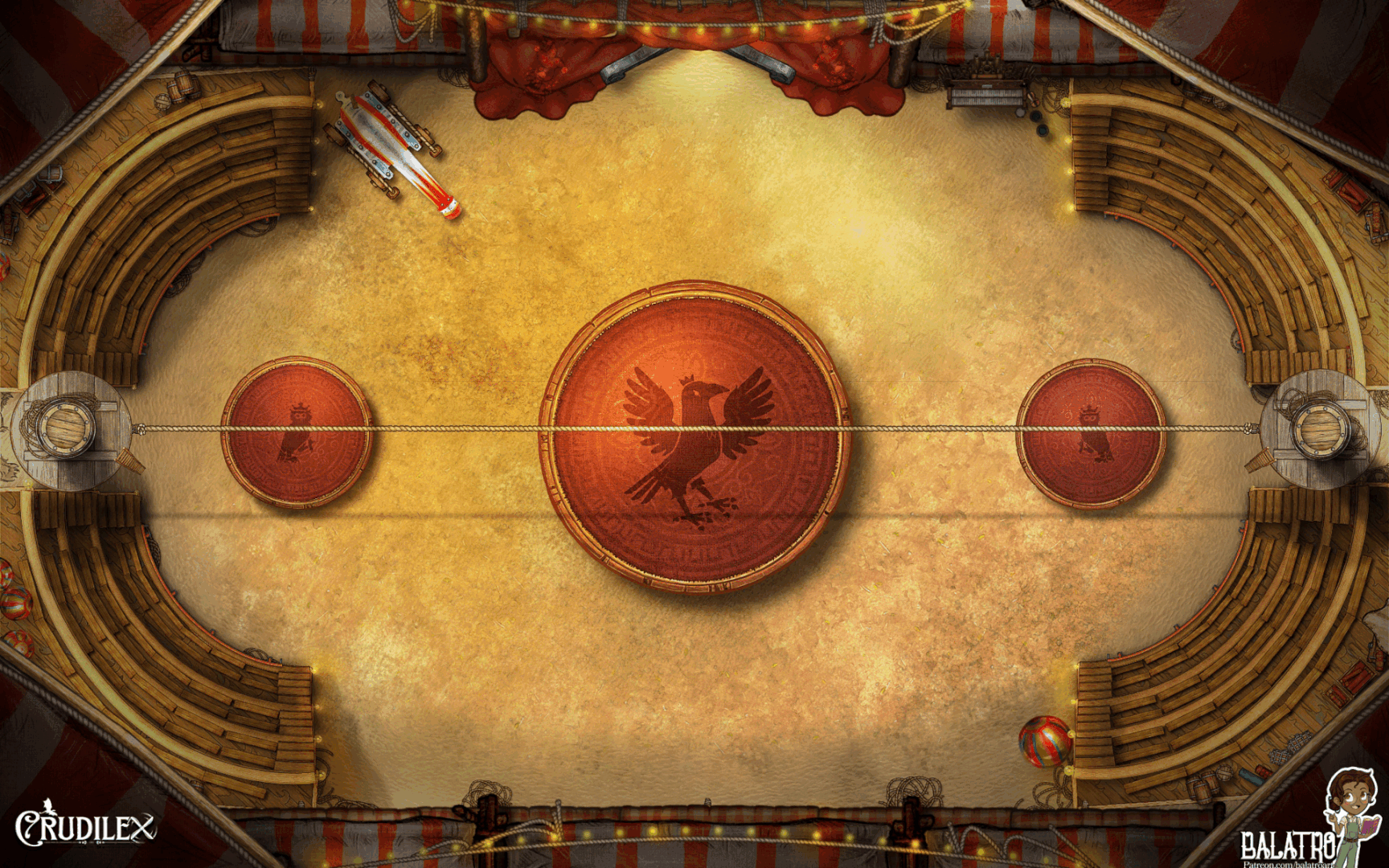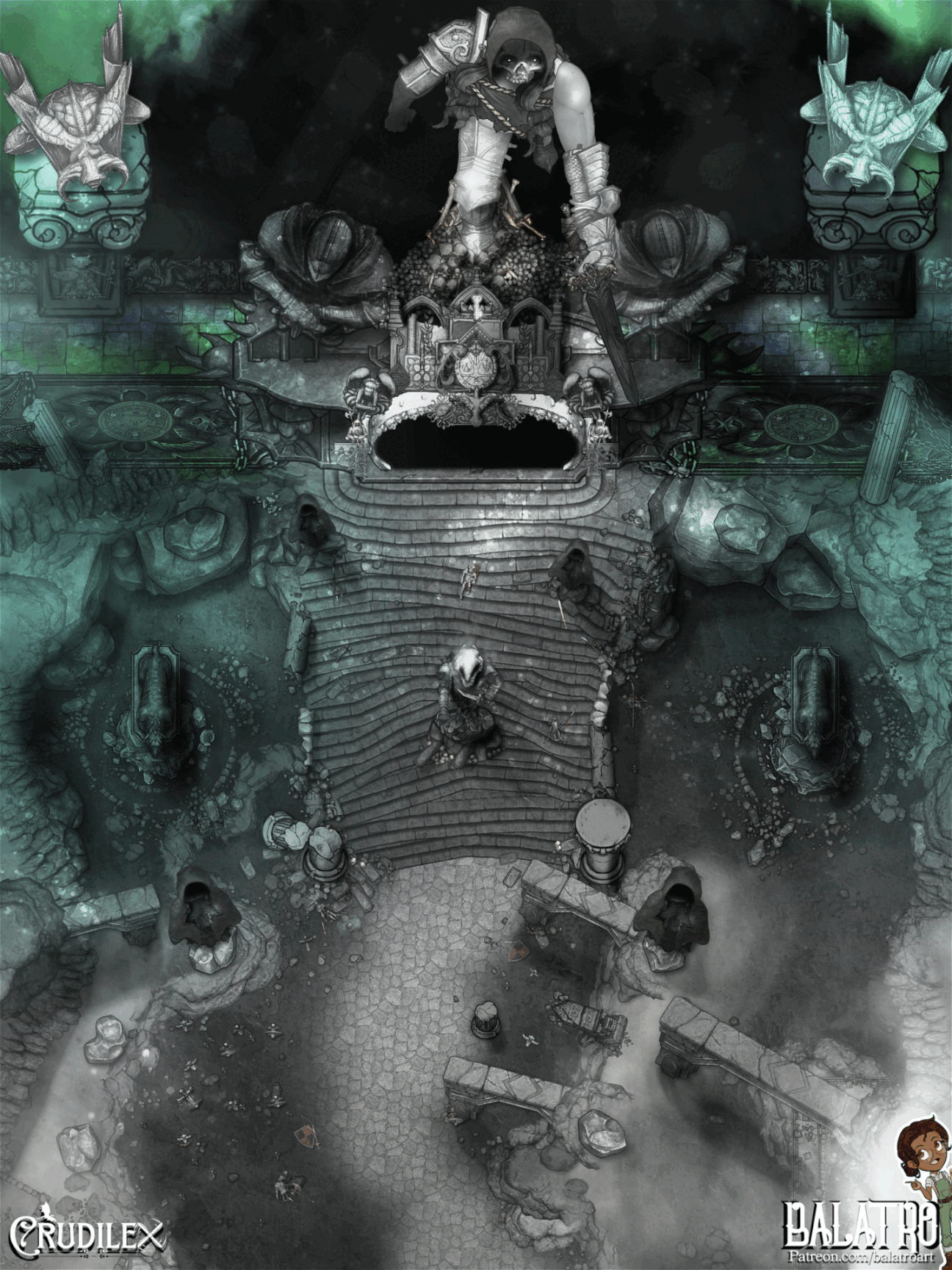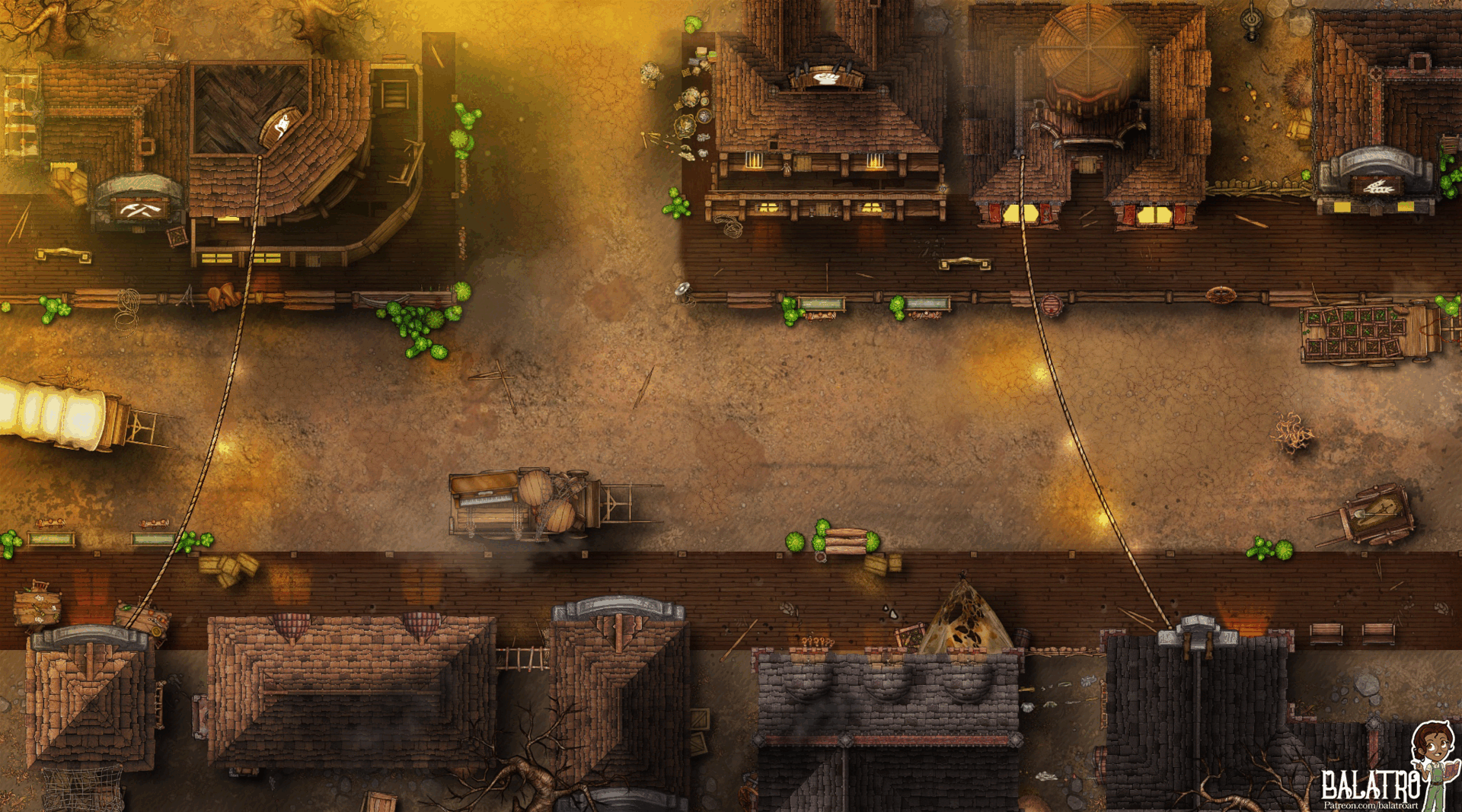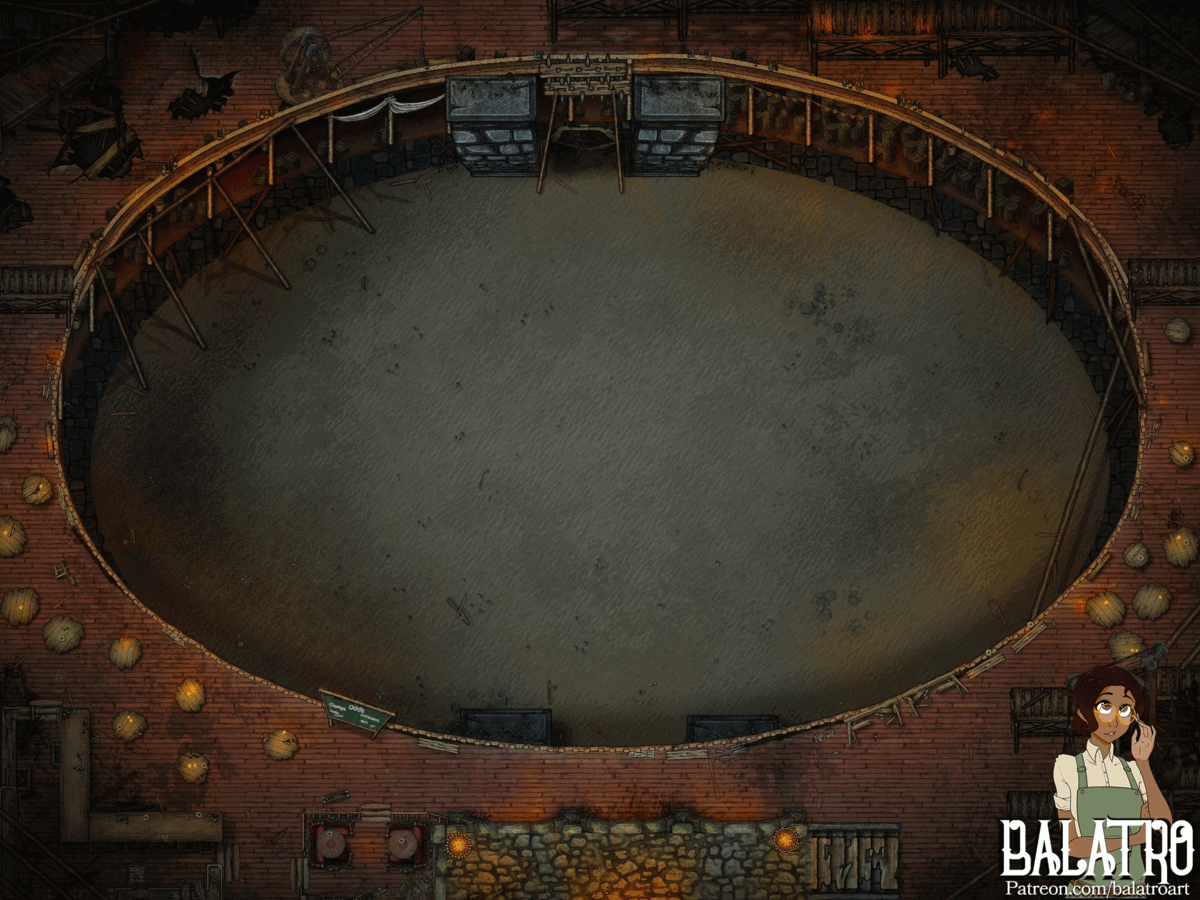
3rd District: Cull
The Uncivil Civilization
The uncivil civilization, Cull is a frontier-turned-city where the more bestial creatures, those who struggle to adapt to the structured urban life of Grand Nostridan, congregate and live by the only rule they truly understand: the strong survive. The district is a dry gulch, crisscrossed with awnings and bridges. Massive cobbled structures and scattered steel buildings give it that unique blend of wild and tamed that defines the whole culture of Cull. While it lacks much in the way of law, the few brave guardians who watch over it ensure that even those with little choice still get something close to a fair shot.
Battlemaps set in this location
Rigarak Pits “The Mill”
A world-famous illegal fighting pit, some of the greatest fighters have bled in the filthy sun-baked dirt of this glorified hole with tired stone benches and plank rafters strung with dangling ropes. The Rigarak Pits are hidden deep in Cull, past a high-traffic and very dangerous logging operation. Huge machines and round-the-clock laborers keep all unwanted visitors from reaching the back of the operation, where the pits are concealed in an out-of-use quarry.
Just north of them is the district wall, on the other side of which lies the Hook, an equally unwelcoming slum of all slums. A well-placed coin can get one smuggled through directly to the pits without much fuss. The Rigarak is a brawler’s game where matches begin as bare-knuckle fights, but competitors are allowed to use any weapons they can manage to get after the fight has begun. That includes
objects they can break and wield, like planks and the ropes that dangle above. The audience is encouraged to bring trash to hurl at the fighters, bottles, old pipes, anything within reach. Audience participation is a defining feature of Rigarak pit fighting. The crowd is expected to take part, as the winner is not the one who lands the final blow but the one who can outlast their opponent with the audience stacked against them.
Ravelin
The closest thing one can find to a lawless wild west town within the 500-mile bounds of the city, Ravelin feels like a town in itself. Located in the roughs of Cull on the road to the Mill, long wooden walkways break up the dusty street. Caravans of logs and laborers are the only passing traffic in this otherwise empty, out-of-the-way reach of Cull. Ravelin stays generally quiet, if not for the occasional fight spilling from the saloon into the road or outlaws from the Skyfishers or Scalerock riding in to cause trouble for some quick cash.
Most folk from Ravelin are quick to get out. Life is rough there, and once your labor days are done, there isn’t much hope of finding work. The desperate, dry outskirts of Meldwyn have a way of chewing folks up and spitting out the bones.
Scalerock
A hollowed-out stump of a spire stone, Scalerock is home to a clan of Forgon whose culture has evolved in isolation to venerate mud and clay. Long before the city was built, many similar spire stones dotted the northwestern areas of what was then known as the Everspring Bowl. Some eroded over time, or, like Scalerock, were blasted apart with dynamite by desperate prospectors searching for Iari crystals.
The jagged chunk of cracked rock that made up the base of the spire remains today. The Forgon of Scalerock are giant alligator-like humanoids cursed with an endless hunger. These Scalerock Forgon paint their scales with the wet slip of the clay found inside their stone burrow and bake it to their hides under the sun. While not particularly welcoming or civil, they require a fairly constant supply of food and will take jobs, generally as laborers or henchmen, in exchange for large quantities of meat.
Culltower
The giant ramshackle building made from discarded wood and planks was built over itself again and again, growing taller and taller for ages until it became the largest structure in all of Cull. The Skyfisher Syndicate eventually began reinforcing and extending the tower, adding landings for their great finches and skiffs, along with houses, taverns, and more, all attached with little more than hammer and nails. Today, the Culltower is nearly the size of a Nostridinian mega-tower and continues to grow as more and more outlaws flee to the unenforceable drylands of Cull.
Mouth of the Mountain
Jagged rocks like shattered teeth are common in the drylands around Cull and Prossporo. These unique features are used as waypoints by many who travel or fly through the area. Each has a distinctive look, and the Mouth of the Mountain stands out even among them.
The underground below Cull is rich with mining opportunities for treasure hunters seeking Sun Ivory, and the Mouth of the Mountain is a mine entrance dug into a natural formation that looks like a monstrous maw just below Culltower. The Skyfishers make it clear, the goods in the underground beneath their turf are off-limits and belong to them. That doesn’t stop those foolish enough to sneak in and try to dig.
Fangs
A shade-covered structure, Fangs is home to a group of vampires protected by an outsider cortege. This clan of vampires takes in exiles from other clans or those who have been discovered by humans for what they truly are.
Such vampires, being immortal, can generally wait out the backlash against them by vanishing to places like Fangs for a generation, sometimes two, then return as a long-lost uncle, almost always able to reclaim their social standing and influence, if it still exists by then.
The Stone Army
Thousands of giant stone statues in the shape of soldiers stand vigilant over the cavern descent, once, in ancient times, the primary entrance to the underground megacity of Undrum’Kal. Thousands of years after its fall to ruin, this gargantuan entrance and its stairs have been so worn by time that they hardly resemble a man-made structure at all. Only the vaguest outline of what was once an imperial city gate can be traced, as all the edges have softened, eroded, or become overgrown.
In contrast, the giant statues seem completely unaffected, appearing just as they must have when first sculpted by the earliest mortals in Crudilex. Historians speculate this preservation may be because of something like ancient Atlantean Wakestone magics, the art of breathing actual life into rock and stone. This technique is never used on statues today, forbidden by modern taboo, but such restraints did not exist when these great effigies were constructed.
Hangs’ Greatfinch Hatchery
Just below the Culltower, Greatfinches are reared and raised along the cliffs. The canyon city of Cull below is alive with hatchlings from this very hatchery, flying and weaving deftly through the rope bridges, stone outcroppings, and sunshade canopies.
Skyfisher Syndicate Hideout
The Skyfisher Syndicate runs the highest reach of Culltower. Not the very top, as that’s a hard point to define, the highest part is always shifting, reaching ever taller as more is added or rebuilt when sections collapse. The Skyfishers control the smuggling and piracy rackets in the city and defend their claim over the industry with deadly force. Any smuggler in the sky had better pay their dues to the Fishers, or they may end up a feast for the hungry sky. The Syndicate stands out from the others like them as their members have no singularly defining features besides an absolute fearlessness while among their airships and a love of gauge, the mechanical prosthetics that most of their crew members choose to use. Skyfishers started as a subculture of aeronauts but their antics and lawlessness did not fit well in the paramilitary structures of the southern aeronauts, banding them together as a community of outcasts.
East Cull
A large area near the bowl’s rim along the Prossporo District wall, East Cull answers the question of what life in a downtown city would be like if envisioned by creatures and ancestries not typically associated with urban living. East Cull’s buildings, what the locals call “Scrapers,” are crumbling, leaning structures not unlike the towers common in other districts; however, they are held together with bolts, rivets, and pig iron scrap pounded into place to reinforce them. The streets are shadowed by a chaotic web of hanging wires, like a massive spider’s web, the direct current wires and telephone pole lines that feed the whole quarter its power in a mess of buzzing cables.
Wires snap on a regular basis as a result of over-tension, wind, or great finches landing on them and weighing them down. The electrical lines carry a significant charge, and when they snap and lash across streets they smash against buildings, thrash about, and spray sparks in all directions. Whole city blocks are sometimes rendered impassable until power to the downed lines is cut.

















